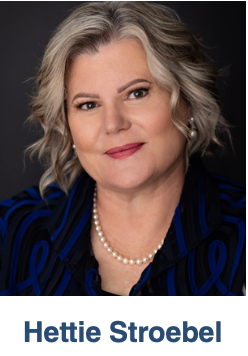Is the C-Suite Getting Inflated?
A flurry of new titles entering the executive ranks has its pros and cons.
If you feel like the c-suite has been expanding with an alphabet soup of titles lately, it’s not your imagination. While growing with the times has always produced an evolution of executive titles, it seems now more than ever the industry is creating a new legion of leaders: chief digital officer, chief transformation officer, chief patient officer, chief revenue officer, chief diversity officer, chief innovation officer, chief ethics and compliance officer, chief sustainability officer, chief impact officer, and the list goes on and on.

“I think it’s become more of a trend now than [during] other [points] of my career,” says Daniel Lawlor, senior vice president, North America human resources and commercial HR business partner at Teva. “I think a lot of companies are moving away from more traditional job evaluation and job titling structures, which I think is contributing to it. But I also think the recent labor market could be contributing to it as well.”
Stephen Brengle, managing director, pharmaceuticals and biotechnology, North America, in WittKieffer’s global life sciences practice, agrees that changing environmental factors are contributing to the uptake of some titles. “The reason for the constant expansion is most likely related to the need for companies to shift and address the evolving business needs of developing life-saving therapies, in combination with the dynamic changes occurring culturally within the industry and our environment today,” he says.
The emergence of new titles
Though internal factors, such as a reorganization or a new business focus, can contribute to the creation of titles, there are many external elements influencing the new c-suite. In the case of some nontraditional titles, the driver is sometimes about the company trying to demonstrate to internal and external stakeholders that they’re serious about certain issues or concerns.
For instance, shareholders who are focused on revenue would like to see a chief revenue officer, while those promoting a long-term strategic plan would prefer seeing a chief transformation officer. Community members might be more drawn to a company with a chief sustainability officer. When stakeholders review the company’s leadership team and see titles that speak to their interests, it makes them feel as if the company is specifically addressing their particular issues or concerns.
Two popular initiatives these days are patient centricity and diversity, so it’s no surprise chief patient officer and chief diversity officer titles are growing in popularity.

“[Patient centricity] is at the forefront of drug discovery and where companies will begin to frame their pipelines in the future,” says Brengle. “At the same time, you have chief diversity officers who are focused on creating diverse, equitable, and inclusive work environments where data has already shown that companies that diversify will be more successful in the long run. Patient recruitment is a significant deliverable for a chief patient officer, and with an increased focus on diversity in patient recruitment, you often see this as an area where the two roles intersect in a meaningful way.”
Top-ranking titles can also attract employees. Current and prospective workers who are concerned about aspects of the company’s culture would appreciate seeing a chief diversity officer; a chief digital officer would be important to those driven by innovation and technology. These “statement titles” demonstrate that the company is more progressive and advanced in those areas.
Lawlor sees the pandemic as another driver of specific titles, such as chief remote officer and chief safety officer, as the workplace has been transformed. Again, creating these top-level positions communicates a commitment to prospective employees that the company takes remote work and employees’ health and safety seriously.
“Typically, if things become really important in society, they eventually come into corporate America, and they get reflected in things like titles,” says Lawlor.
What’s in a name?
The structure of a company can help decide titles. Some companies, like Teva, are very transparent with their organizational classification to clearly identify hierarchy. “Our company has leaned away from [‘chief’ titles], because it’s part of our culture,” says Lawlor. “We still use the traditional titles of executive vice president, senior vice president, and vice president. When you have a more traditional titling structure, it’s very transparent to the organization what level someone’s at, and you can imply what pay level they’re at as well; whereas, if everyone’s using the title chief, it doesn’t necessarily mean they’re all really paid or titled at the same level.”

Hettie Stroebel, founder and CEO of Launch Excellence Partners, a strategic marketing planning and commercialization advisory firm to the life sciences industry, notices a difference in structure among companies that are platform driven vs. non-platform driven. Those with just one drug or one indication tend to be leaner on top. She says the stage of a company is also important—startup vs. a more mature company—and the desire to have a blend of functional responsibility and divisional responsibility.
“The company’s strategy also often determines what roles they would have,” she says. “For example, if you look at the Novartis structure, that is very different than some of the other pharma companies, because of what the organization’s strategy is. They were one of the first organizations I saw that had the role of chief strategy officer.”
When it comes to startup biotechs, many are more generous with their titles. For instance, in a biotech where there aren’t as many employees, the one person handling all the marketing might be titled chief marketing officer by default. In addition, a smaller company that can’t pay as much as a larger corporation might use the “chief” title as an incentive in a competitive talent market.
Smaller startups also can use titles to attract pharma veterans who may be looking to advance; however, at a larger company, that title can be difficult to come by. “That definitely plays a big role,” says Stroebel, who worked for Merck in regulatory and commercial for 28 years before starting her own business. “[I know] many ex-Merck colleagues that now are chief marketing officer [at a smaller company], where they previously were in a director’s role.”
The negatives of nomenclature
One caveat of an expanding c-suite is that too many “chief” titles can lead to title inflation. “This can be problematic over time [because] it dilutes the significance of the title,” says Lawlor. “If everyone seems to have the ‘chief’ title, then it doesn’t feel that important anymore to someone who maybe was hired in thinking they were really going to be somebody at the [top] leadership level.”
The varying roles and responsibilities of “chiefs” across companies can also contribute to some devaluation—where one chief sustainability officer might manage a department of five people, others may be holding down the fort themselves. The scope of a “chief’s” job can greatly vary.
Stroebel worries that creating unique titles can be a disservice to employees in the long run, as it can pigeonhole someone in their career. “Where do they find a similar title again in the industry if it’s very unique?” she ponders. “Even in your own organization, [how do you] grow with that particular title? It’s very important that [companies] think about the longevity of the role and what that title looks like vs. here’s a person and now you make a box for them.”
In the context of pay equity, “chief” titles also can hide the true level of individuals in an organization. “My sense is that everyone with ‘chief’ is not really being paid at the same level or grade [within and between] organizations,” says Lawlor. “From that standpoint, it works a little against the aspects of being more transparent with pay.”
Ultimately, companies need to think about the sustainability of these titles and really look at why they are adding them. “Is it something that’s a fad? Is it because it draws people? Or is it about where their company is—and what will that organization look like in the long term?” asks Stroebel.
Adding new titles also may cause a shuffle of other positions, so companies should be cognizant of the greater companywide impact. “[Adding a ‘chief’] must provide a good business case and value to the company,” says Brengle.
As the c-suite continues to evolve, there’s one last area that could affect titling. From a reputation perspective, many organizations have moved away from using the term “chief” for its connection to Native American terminology. For example, the Washington Redskins were temporarily renamed the Washington Football Team in 2020, until they were officially renamed the Washington Commanders earlier this year. In the public sector in 2020, the city of Duluth, Minn., lobbied to remove the title of “chief” from key job titles, and was successful in one case.
“For me, it’s just a question of time before the use of the title chief gets challenged in corporate America,” says Lawlor. “We’ve seen so many different aspects of diversity and inclusion being embraced in [business], and this could be something that we see coming soon as another aspect of diversity and inclusion.”
Elaine Quilici is Pharm Exec’s Editor-in-Chief. She can be reached at equilici@mjhlifesciences.com.
